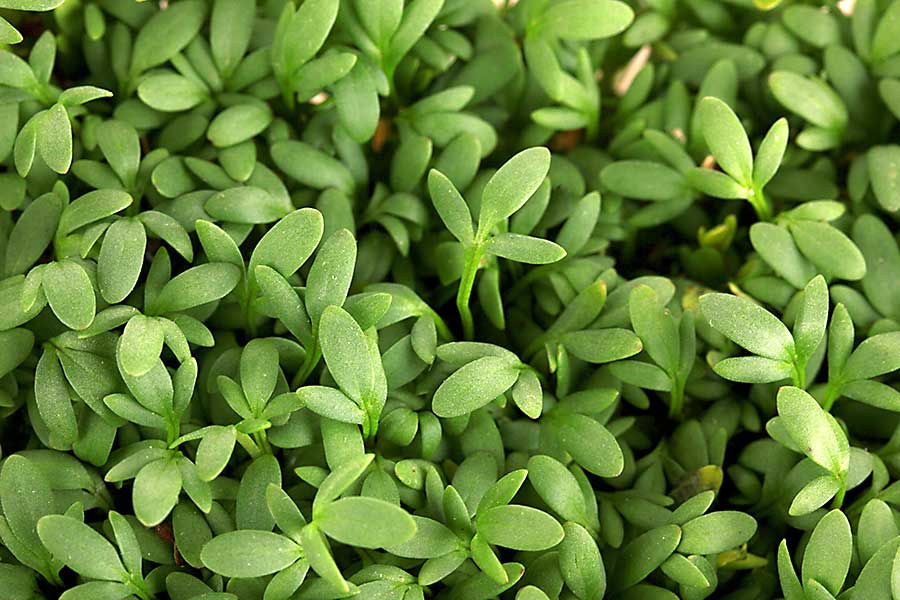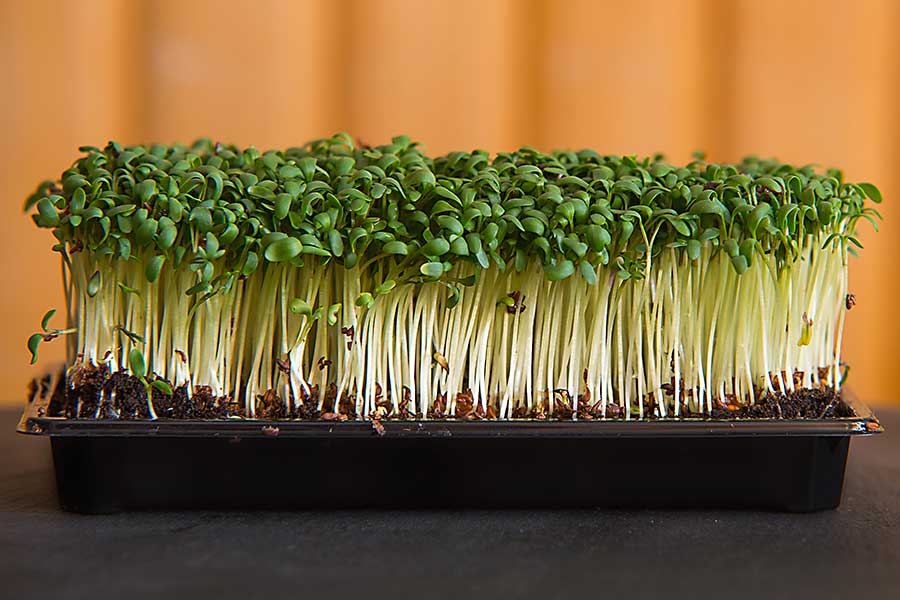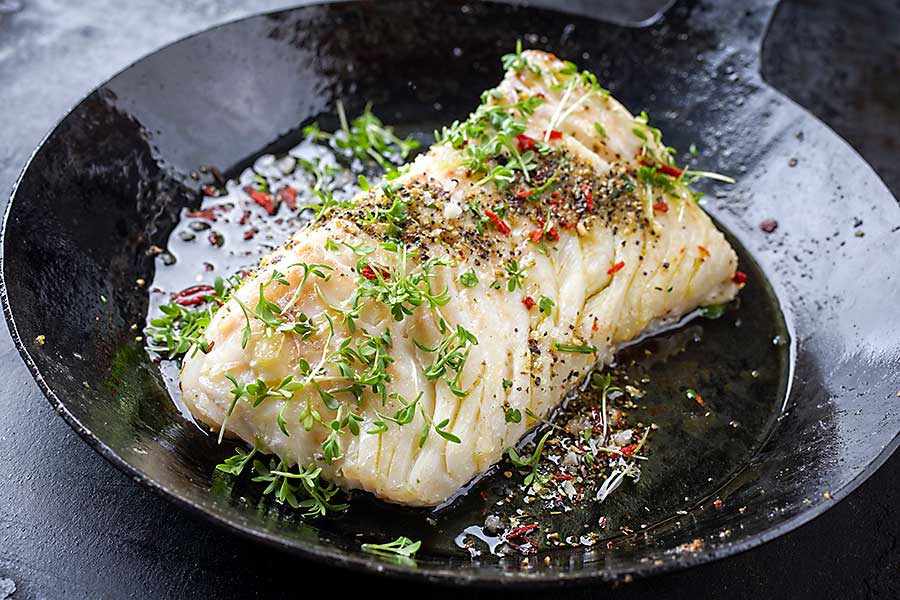Cress
Cress is a fast-growing edible plant which belongs to the genus Lepidium. Its scientific name is Lepidium sativum, and it is also often known as garden cress to help distinguish the plant from other types of cress. Other terms used to describe cress include garden pepper cress, pepperwort, pepper grass, or poor man’s pepper. Cress is related to both mustard and watercress, both of which share its peppery, tangy flavour and aroma.
Nutritional benefits of cress
Cress is an extremely nutritious food, especially when consumed raw. It is packed with vitamins A, C, and K, as well as important minerals. Cress is also an excellent source of calcium, protein, dietary fibre, iron, folate, and vitamin E. It also contains beta-carotene, folic acid, linoleic fatty acids, tocopherol, and arachicidic and ascorbic acids.
Raw cress is made from 89% water, 6% carbohydrates, 1% dietary fibre, 3% protein, and less than 1% fat. 100 grams of cress includes more than 5 times the daily recommended intake of vitamin K, 83% of the daily’s vitamin C intake, and almost half of the day’s vitamin A intake. It is also high in manganese, potassium, and magnesium.
How to use cress in cooking
Cress has a peppery and tangy flavour that can add a spicy kick to different foods. It is most often eaten raw in salads or added to sandwiches and wraps. In some parts of the world, cress is known as being a popular accompaniment to egg sandwiches. Cress can also be used like a herb, added to dishes to give flavouring and aroma. It can also be wilted and cooked like spinach leaves, served as a side dish or added to stir fries. Another way to use cress in the kitchen is to puree it and serve it as a chilled soup. If you like foraged greens, boil cress with mustard leaves and corn salad for a unique leafy dish.
In the Middle East, cress seeds are mixed with custard to make a delicious hot drink.
Medicinal uses of cress
Cress has been used in Ayurveda, a traditional Indian medicine for thousands of years. In Ayurveda, it is known as chandrashoor while the seeds of cress are called aaliv or halloon. The herb is also highly regarded as a medicinal plant in the Middle East, where it is called habbat al hamra. In herbal medicine, cress has the following properties:
- Indigestion: The seeds of garden cress can help relieve indigestion and constipation,
- Menstruation: The seeds contain phytochemicals that work similarly to estrogen, helping to regulate menstruation,
- Anaemia: The seeds of garden cress can boost haemoglobin levels over time, helping to relieve iron deficiency,
- Skin issues: Seeds can be used topically to sooth irritated or dry skin and sunburn. Usually, the seeds are crushed and mixed with water and honey and then applied to the skin,
- Galactagogue: Garden cress can help stimulate the mammary glands and help induce milk in lactating mothers,
- Laxative: Garden cress can be used as both a laxative and a purgative, helping to relieve constipation as well as diarrhoea and dysentery.
- Memory: The content of arachidic fatty acid and linoleic acids can help boost memory.
Private Chefs, Art of Dining
CHEFIN is a private chef platform that’s reimagining social dining.
You can easily connect with 1 of our 250 private chefs and treat your guests to restaurant-quality dining experiences in the comfort of your own home, office or chosen venue. From high-end dining to quirky social food experiences, the CHEFIN platform makes it effortless for you to access gourmet food that’s worthy of a Michelin-starred establishment.
What you get:
-
- Your very own private chef who is vetted and insured,
- A customised menu for your needs,
- 24/7 concierge support,
- Complete post-dinner cleanup,
- A fun, stress-free, and unforgettably dining experience!


